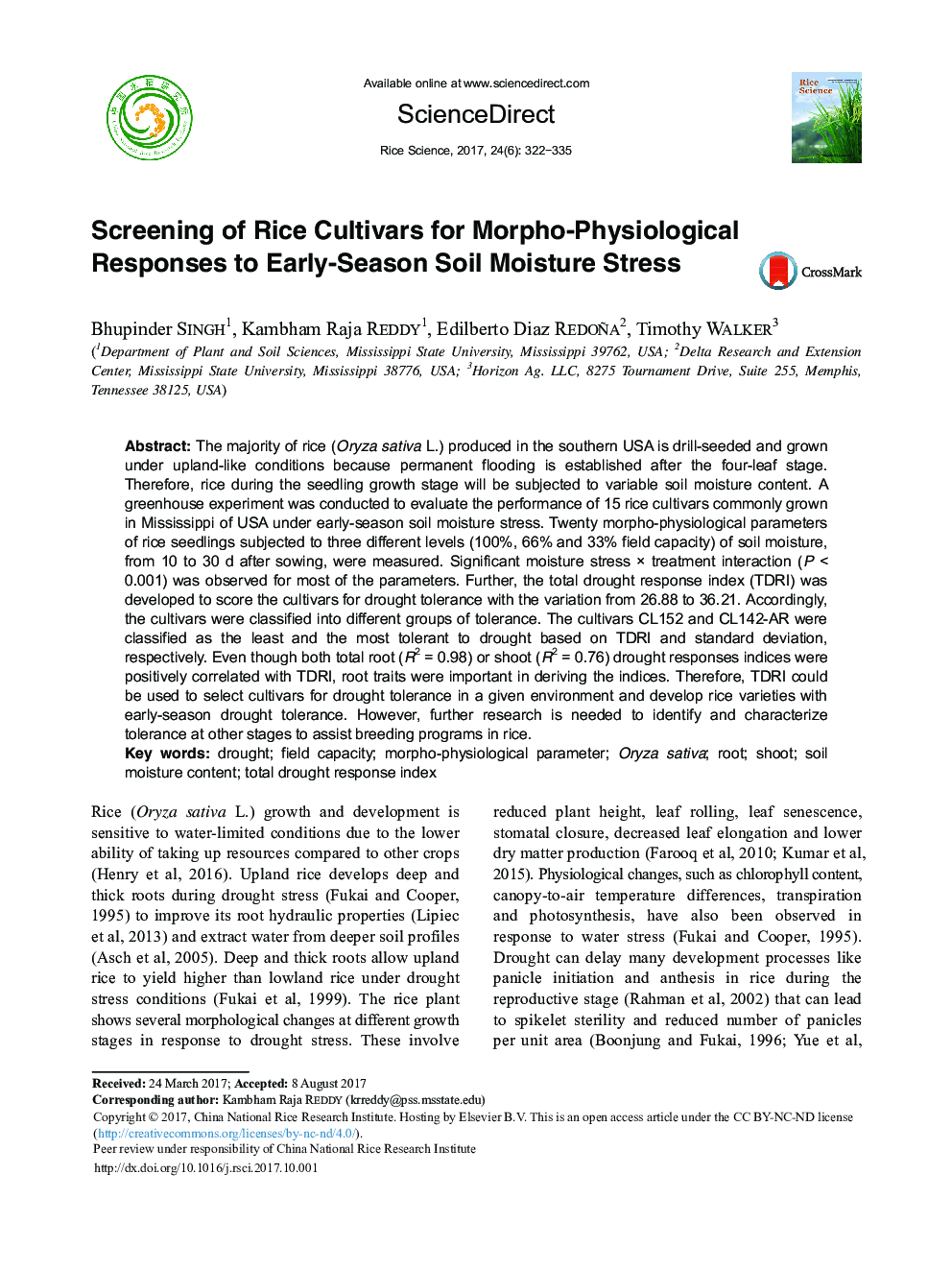| Article ID | Journal | Published Year | Pages | File Type |
|---|---|---|---|---|
| 8877341 | Rice Science | 2017 | 14 Pages |
Abstract
The majority of rice (Oryza sativa L.) produced in the southern USA is drill-seeded and grown under upland-like conditions because permanent flooding is established after the four-leaf stage. Therefore, rice during the seedling growth stage will be subjected to variable soil moisture content. A greenhouse experiment was conducted to evaluate the performance of 15 rice cultivars commonly grown in Mississippi of USA under early-season soil moisture stress. Twenty morpho-physiological parameters of rice seedlings subjected to three different levels (100%, 66% and 33% field capacity) of soil moisture, from 10 to 30 d after sowing, were measured. Significant moisture stress à treatment interaction (P < 0.001) was observed for most of the parameters. Further, the total drought response index (TDRI) was developed to score the cultivars for drought tolerance with the variation from 26.88 to 36.21. Accordingly, the cultivars were classified into different groups of tolerance. The cultivars CL152 and CL142-AR were classified as the least and the most tolerant to drought based on TDRI and standard deviation, respectively. Even though both total root (R2 = 0.98) or shoot (R2 = 0.76) drought responses indices were positively correlated with TDRI, root traits were important in deriving the indices. Therefore, TDRI could be used to select cultivars for drought tolerance in a given environment and develop rice varieties with early-season drought tolerance. However, further research is needed to identify and characterize tolerance at other stages to assist breeding programs in rice.
Related Topics
Life Sciences
Agricultural and Biological Sciences
Agricultural and Biological Sciences (General)
Authors
Bhupinder Singh, Kambham Raja Reddy, Edilberto Diaz Redoña, Timothy Walker,
